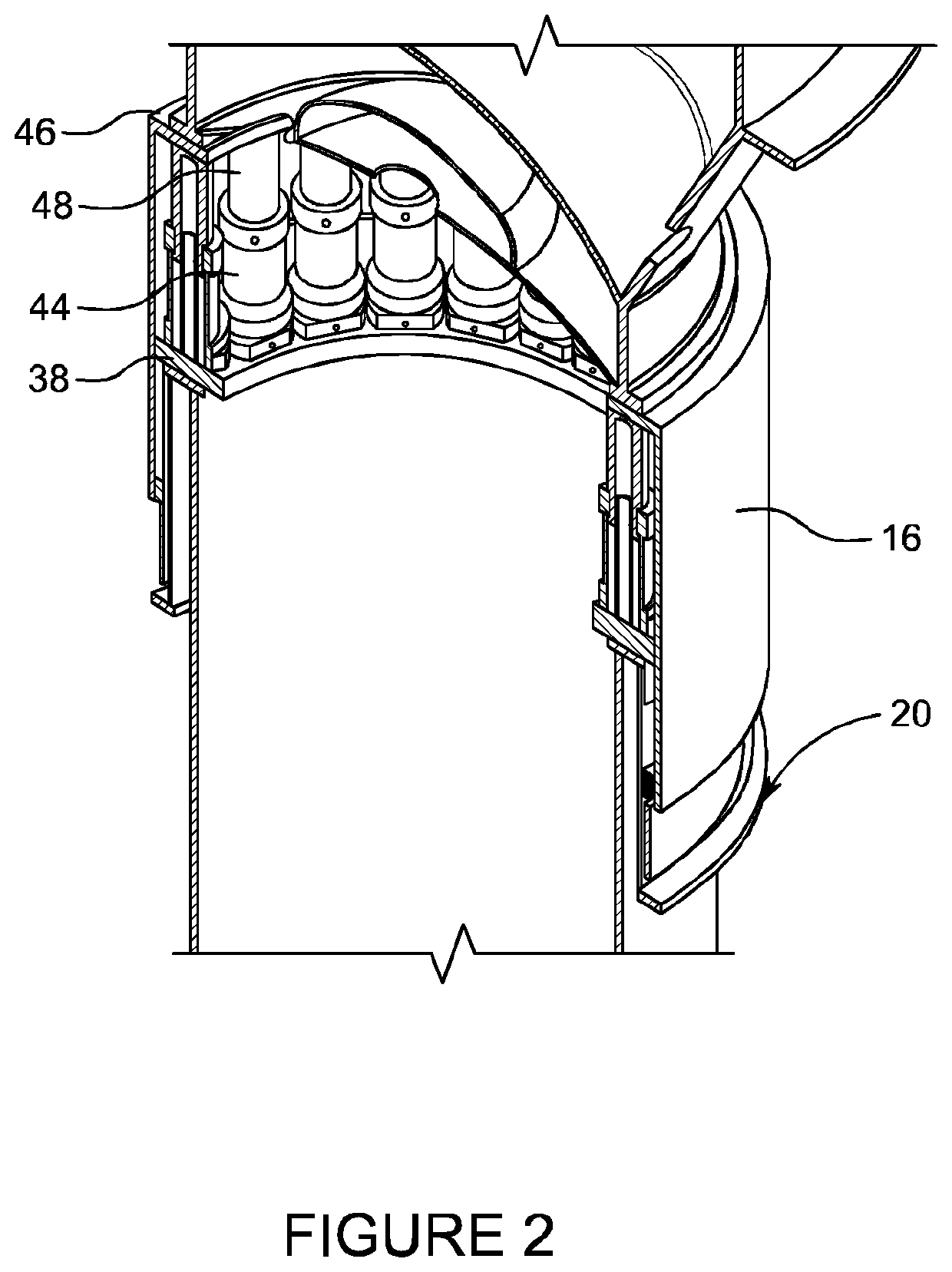Pile-Driver Assembly and Method for Driving a Pile Into the Ground
- Summary
- Abstract
- Description
- Claims
- Application Information
AI Technical Summary
Benefits of technology
Problems solved by technology
Method used
Image
Examples
Embodiment Construction
[0061]FIGS. 1 to 5 illustrate an example of a pile-driver assembly 10 for driving a pile 12 into the ground. The pile-driver assembly 10 includes a casing 14 defining a chamber 32. That is, the casing 14 comprises an interior volume (i.e. chamber 32) defined by an outer wall 30. In this example, the casing 14 is substantially cylindrical (i.e. the outer wall 30 of casing 14 is substantially cylindrical). The cylindrical shape of the casing enables easy transportation of the assembly. In addition, the cylindrical shape allows for a good load transfer of the pressure that builds up inside the casing. The internal pressure during impact results in a hoop stress in the wall of the casing. However in other examples casings of different shapes may be used.
[0062]The chamber 32 is configured to house a fluid, for example water. In other words, the chamber provides a generally sealed space configured to house and maintain a volume of fluid therein. The casing 14 may include a valve in a wall...
PUM
 Login to View More
Login to View More Abstract
Description
Claims
Application Information
 Login to View More
Login to View More - R&D
- Intellectual Property
- Life Sciences
- Materials
- Tech Scout
- Unparalleled Data Quality
- Higher Quality Content
- 60% Fewer Hallucinations
Browse by: Latest US Patents, China's latest patents, Technical Efficacy Thesaurus, Application Domain, Technology Topic, Popular Technical Reports.
© 2025 PatSnap. All rights reserved.Legal|Privacy policy|Modern Slavery Act Transparency Statement|Sitemap|About US| Contact US: help@patsnap.com



